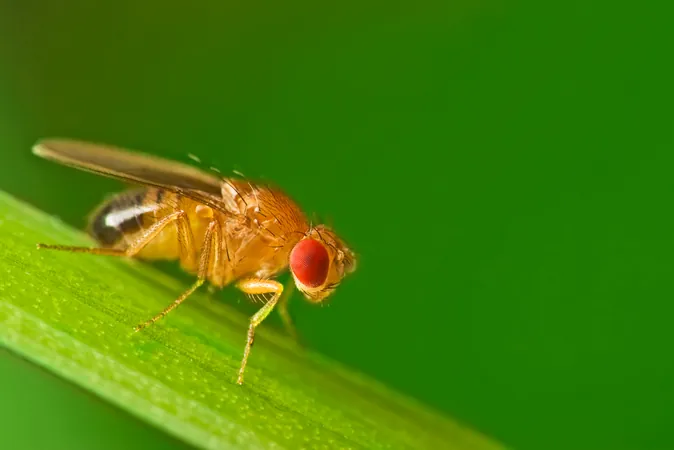
Unlocking Genetic Secrets: Fruit Flies Reveal Dynamic Resistance Strategies
2025-09-15
Author: Liam
A Groundbreaking Stanford Study Unveils Genetic Flexibility
In an exciting new study from Stanford, researchers delve into the fascinating world of fruit flies, uncovering how these small creatures maintain genetic diversity in the face of ever-changing environments. This research is key not just for fruit flies, but for understanding survival mechanisms in a rapidly evolving world.
The Concept of Dominance Reversal Explained
Traditionally, genetics categorizes alleles as either dominant or recessive: dominant traits overshadow recessive ones unless no dominant allele is present. However, this latest research supports a compelling theory known as "dominance reversal." This concept indicates that genetic variants can behave differently depending on environmental conditions, potentially providing long-lasting resistance against pesticides.
Imagine you haven’t used pesticides for years, and suddenly you need to introduce them again; the flies will swiftly adapt, showing remarkable resistance. Dmitri Petrov, a senior author of the study, likens this to a hidden shield that becomes activated when needed.
A Natural Experiment in an Orchard
To gather evidence, the Stanford team monitored fruit fly populations in an orchard under controlled pesticide exposure. Their findings, published on September 15 in *Nature Ecology and Evolution*, provide unprecedented support for the dominance reversal theory. Using a combination of genetic surveys, lab tests, and real-world experiments, they revealed that even without pesticide pressure, both resistant and non-resistant alleles persist in the population.
The research indicates that these alleles don’t permanently behave as either dominant or recessive. Their expressions shift based on environmental needs, aiding populations in adapting quickly and efficiently.
Genetic Variants: A Hidden Treasure?
Lead author Marianthi Karageorgi noted that this adaptive mechanism could have existed for millions of years, helping insects resist natural chemical defenses that vary seasonally. Given that synthetic insecticides often mimic these plant defenses, understanding this versatility opens new avenues for future research.
Analyzing Genetic Patterns through Pesticide Dynamics
The study also sought to determine how widespread this genetic flexibility is across various environments. Using outdoor setups with differing pesticide pressures, researchers confirmed that resistance alleles rose sharply during pesticide use and showed a gradual decline afterward. Puzzlingly, even in untreated settings, these alleles remained prevalent.
Mathematical modeling showed that resistance alleles could act as dominant when advantageous (in the presence of pesticides) or as recessive when they imposed a survival cost, allowing them to persist in varying environmental pressures.
A Ripple Effect in Evolution
The researchers went beyond individual alleles, observing how changes in one part of a chromosome could impact others—a phenomenon akin to an earthquake affecting surrounding structures. This ripple effect emphasizes the complex relationships within genetic sequences and prompts essential questions about natural selection’s role in shaping genetic diversity.
Future Implications: Understanding Evolutionary Forces
This study not only highlights the hidden complexities of genetic dynamics but also urges scientists to dig deeper into the evolutionary processes driving changes in various species. Petrov emphasizes that understanding these forces could yield crucial insights into how populations adapt to future challenges. As we grapple with the implications of human-induced environmental changes, the fight for genetic survival becomes all the more important.









 Brasil (PT)
Brasil (PT)
 Canada (EN)
Canada (EN)
 Chile (ES)
Chile (ES)
 Česko (CS)
Česko (CS)
 대한민국 (KO)
대한민국 (KO)
 España (ES)
España (ES)
 France (FR)
France (FR)
 Hong Kong (EN)
Hong Kong (EN)
 Italia (IT)
Italia (IT)
 日本 (JA)
日本 (JA)
 Magyarország (HU)
Magyarország (HU)
 Norge (NO)
Norge (NO)
 Polska (PL)
Polska (PL)
 Schweiz (DE)
Schweiz (DE)
 Singapore (EN)
Singapore (EN)
 Sverige (SV)
Sverige (SV)
 Suomi (FI)
Suomi (FI)
 Türkiye (TR)
Türkiye (TR)
 الإمارات العربية المتحدة (AR)
الإمارات العربية المتحدة (AR)